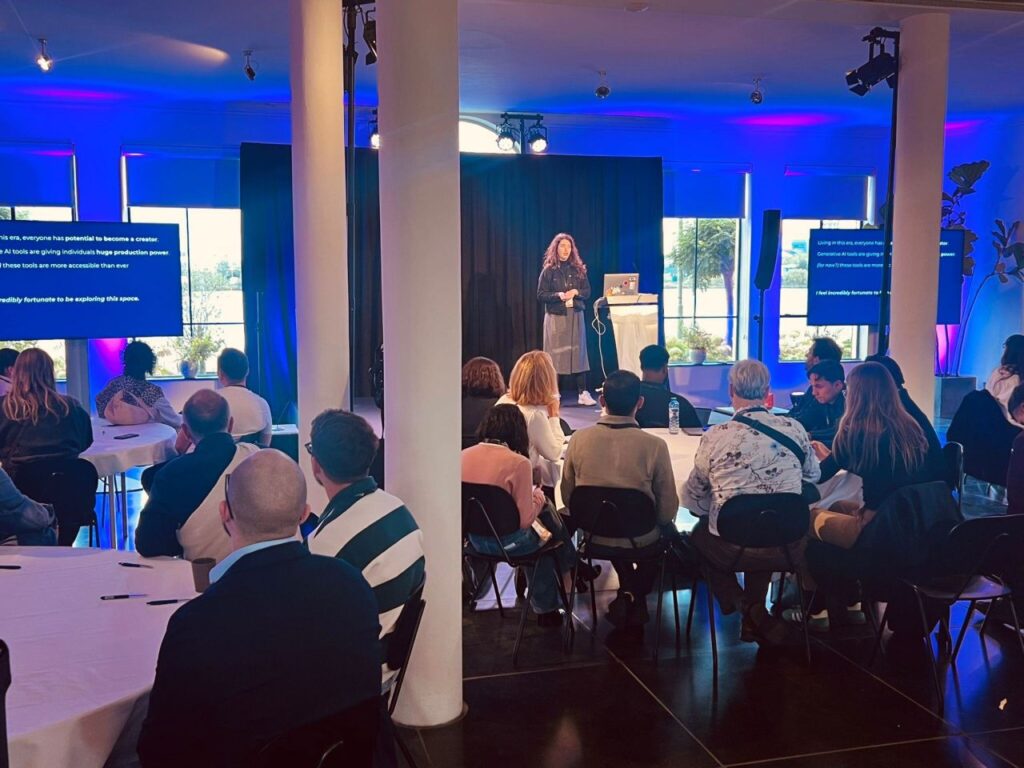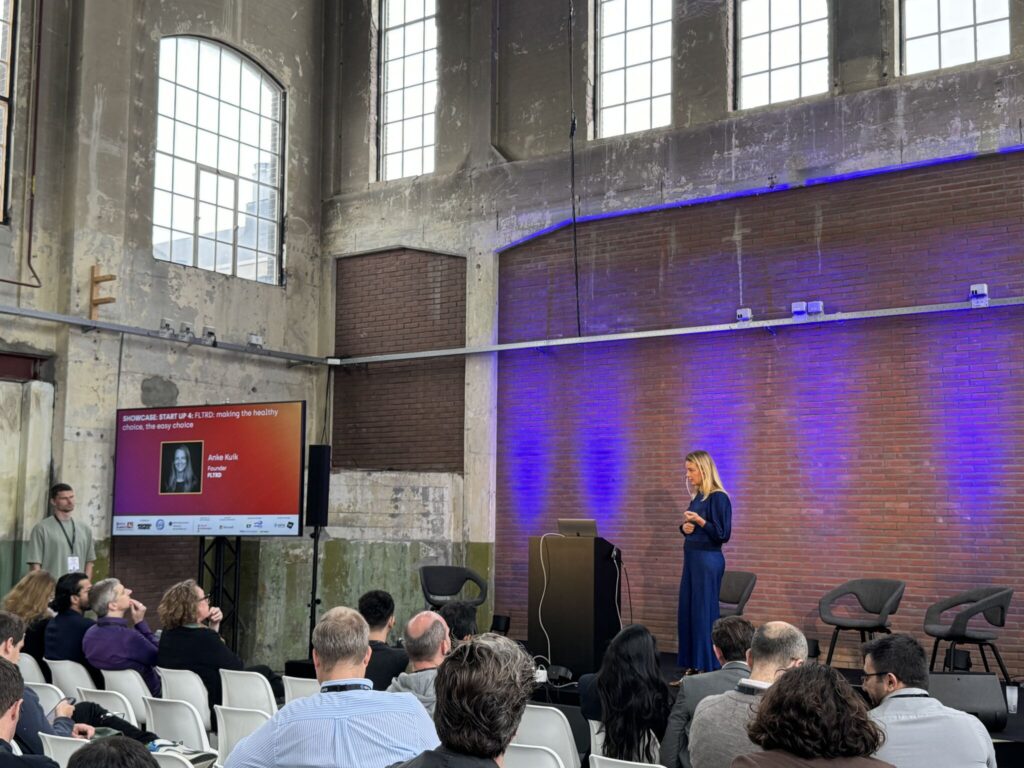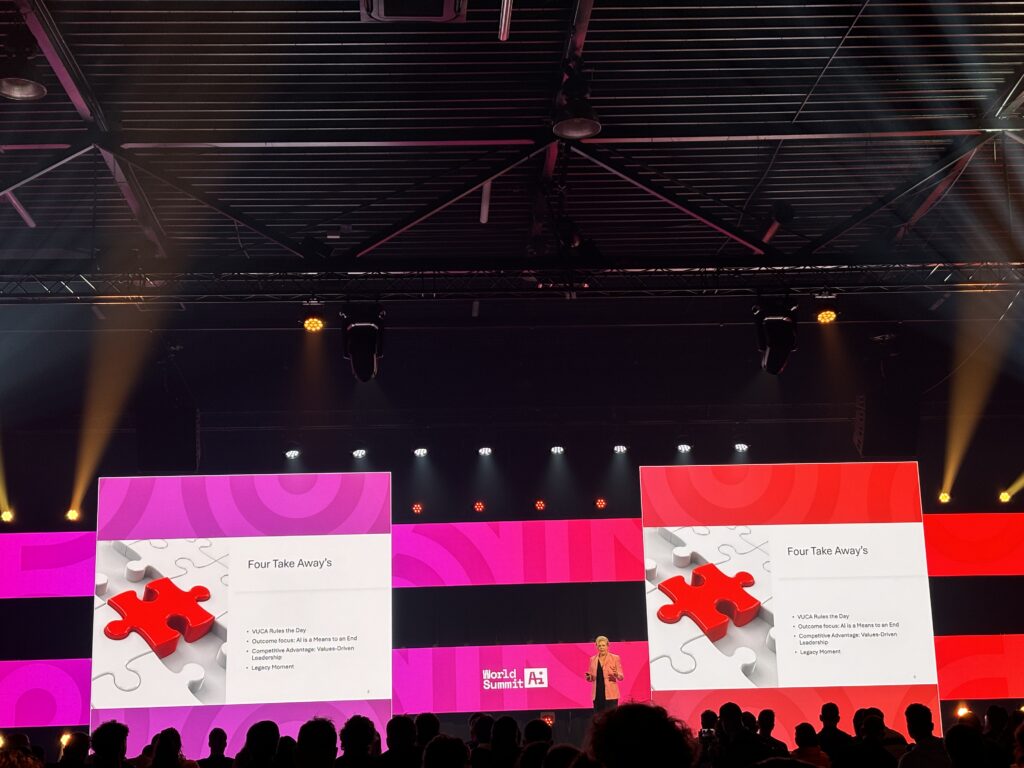
Sharing Global Insights and Knowledge at the World Summit AI 2024
As AI’s capabilities are growing we are seeing groundbreaking innovations starting to emerge. But at the same time, there are challenges that come into play. The challenges that are mentioned during the World Summit AI in Amsterdam are not new. In fact, at Women in AI we’ve been discussing these for a long time. And while the global debate about ethics, privacy and public trust is still relevant, we wonder if the sessions during this event will bring us new insights. And offer some solutions.. maybe?
Author: Ingrid van Heuven van Staereling.
The team of Women in AI was present during the WSAI to explore new possibilities, connect with inspiring minds and, above all, gain insights. This international affair brought tech leaders, startups, academics, investors from all over the world to Amsterdam (or should we say.. Zaandam?). The event had a mix of inspiring sessions from big tech companies to practical workshops and interesting user cases. This combination of hands-on sessions and big presentations made it the perfect place to both gain insights and learn new skills.

Creativity, Coding and AI applications
Speaking of hands-on, our very own volunteer and Creative Technologist Ayça Turan facilitated the workshop ‘Designing AI Workflows for Creative Concept Design’ during the event. In this 30-minute workshop, participants explored the possibilities of AI-assisted Creative Workflows, focusing on three core principles: iteration, curation, and simulation. Through interactive activities and guided experiments Ayça gave the participants the possibility to learn how to use AI tools to generate and refine creative concepts.
Even though her session didn’t turn participants into AI artists, they got the chance to explore practical strategies for integrating AI into Creative Workflows and offer a glimpse into the future of AI in the creative expression. “Living in this era, everyone has the potential to become a creator. Gen AI tools are giving individuals huge production power. We are creating new images and new ways to communicate with each other, including ways to reimagine remembrance and loss” -Ayça said.
People were obviously looking for tips and tricks on how to effectively use AI to their advantage. The workshops were a very popular part of the event. When checking out the workshop ‘Unlock your inner coder: AI-assisted programming’ from Dell and NVIDIA we quickly noticed it was packed! During the workshop they gave the audience insights into different tools to use for web development and marketing implementations, like clustering techniques.
Our and the Planet’s Health
In many ways, AI-powered solutions can support and improve your health on the long-term. Many examples of applying AI to healthcare were shown and there are still plenty of new, smart AI healthcare applications to be made. That is why we were very excited to see Anke Kuik present her amazing AI-powered solution, FLTRD, at the World Summit AI. Anke has been a participant in our Accelerate Program, where we help to create and kickoff women-led AI startups. She had the chance to pitch her AI-powered solution and show the audience how tech can improve everyday choices around food and health. In today’s fast-paced world, we make hundreds of unconscious decisions about what we eat everyday. It’s not just about convenience; it’s about our long-term health. Anke’s approach brings AI right into our supermarkets. With her solution you can scan a product and instantly see how it matches your personal health goals. It goes beyond tracking calories, with the help of AI it can provide personalized recommendations that make sense to the consumer. Needless to say, we were all very proud and impressed by her presentation.

Staying healthy also depends greatly on your surroundings. How do we keep the earth in optimal condition? Being sustainable is very much a part of AI’s conversation. A question that has been asked when we visited TNW earlier this year, was about the time and energy we spend on AI, without being aware of the energy it costs. During the session ‘How do you maximize AI without compromising on sustainability?’ Brian Skjerven (WEKA) tried to answer this question. Their company saw a challenge arising when it comes to the growth of data and its storage. “Running your data all the time is a waste of time.” A flexible, hybrid approach can ensure organizations to deal with energy -and the emissions that come along with that- as efficiently as possible.
But AI can also help with CO2 reduction. Micheline Casey, from Siemens Energy, gave the audience some great examples on how AI can create autonomous, sustainable infrastructures. Applying AI to energy infrastructures and systems helps to manage all types of energy-based problems this world is dealing with. Think about fluctuations in the energy supply, the way AI can spot critical points in our network early on and how it can also help bring CO2 emissions down. Overall, the combination of AI, data processing and energy supply is something we should be very conscious about.

Thinking about values
“What or who unleashed your potential?” Mark Heaps from Groq wants to reduce the imagination gap. Within the company they are eager to make the most out of AI’s potential. “For AI to be successful, a diverse ecosystem is needed.” The technology they offer is fast and developers are able to create more innovative solutions with it. A live demo gives us a glimpse of what they can do. Later on, during the presentation of Darren Hardman (Microsoft) many other examples of AI applications are given. Optimizing customer services, creating better workflows and creating significant time reduction in administrative tasks. But is this enough? Or do we need to think bigger? “If humanity wants to unlock AI’s promise, we need to fully trust it.” -Darren Hardman says. Is trust the issue in really making a difference?
So here we come back to where we started. The same old, same old trust issue. How do we create reliable AI? During many sessions, companies share about the ‘values’ they have established within their organization to deal more consciously with AI. There are so-called ‘guardrails’ in place to keep people that are working with AI in check. And it’s good to be aware. But at the same time, management and stakeholders of these companies have a serious fear of missing out, if those AI applications and implementations are not happening fast enough. A dilemma that becomes clear on day one of the Summit. “There always needs to be a human in the loop.” -Rajesh Naidu (Expedia Group) tells us. The challenge with AI, again, comes down to ethics vs profit. “And many companies are crumbling under the pressure of profit.” – ethicist and ‘AI 2030 Global Fellow’ Coleen Lyons explains. She warns us that the implementation of ethics within AI still needs to grow up a little bit and is aware of the fact that there is a lack of political will to do so. She expressly conveys to us all: “What is the legacy you want to leave behind?” -in a way to make all tech companies and policy makers a little bit more conscious about it.
The event didn’t bring much new issues to light, which might make you wonder if any progress has been made? While we are all more aware of the issues that AI can bring, we all still seem a bit lost in where the responsibility lies. The impact AI can have on our lives is amazing and many companies are benefiting from it. And if there is some sort of moral compass that leads them, I am sure we are heading in the right direction. Right?